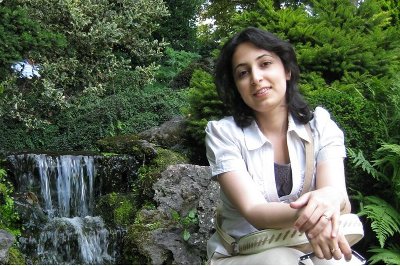
| home | background | people | links | contact |
Objective:
Over the last decades the field of brain imaging has explosively grown. New data acquisition and analysis methodologies are becoming available. Although functional MRI can tell us about specific task-related brain activations, the question always remains how these activations are mediated through the anatomical areas and interconnected pathways of the brain. If differential activations are found in certain brain areas between patients and controls where do these come from? It might as well be that due to a decrease in volume or a decrease in cortical thickness brain function is affected. Or perhaps it is the anatomical connections that are disturbed thereby giving a difference in rely of information to the brain areas, hence affecting the functional output of that brain area. Sima Chalavi her PhD will focus on the anatomical differences between DID patients and controls. To this end, Sima will collaborate intensively with James Cole at the Institute of Psychiatry and Prof. Arthur Toga and Prof. Paul Thompson of the Laboratory of Neuro Imaging (LONI) UCLA, USA.Curriculum vitae:
With her methodological background with a MSc in Biomedical engineering, and the brain as her main interest, Sima Chalavi has all the ingredients to make her a promising researcher in the field of Neuroimaging.
Education:
2003-2006: M.Sc, Biomedical Engineering (Bioelectrics) with GPA 16.72/20. Amirkabir University of Technology, Tehran, Iran
Thesis: Cardiac disease/arrhythmia detection using nonlinear analyses of Heart Rate Variability (HRV)
Areas of study: Modelling of Biological Systems, Biological Signal Processing, Bioinstrumentation, Chaos in Biological Systems, Cybernetics, Neural Networks, Fuzzy Systems
1999-2003: B.Sc, Biomedical Engineering (Bioelectrics) Iran with GPA 16.33/20, Isfahan University, Isfahan, Iran
Current positions::
2008 - now: PhD student, BCN Neuroimaging Center, Universal Medical Center Groningen (UMCG)
2009 - now: Honarary PhD student, Institute of Psychiatry (IoP), King's College London (KCL), London, United Kingdom
Publications:
1. M.azarpour, S. Chalavi , S.A. Seyyedsalehi, “Using RBF neural network and Hermite functions in classification of QRS complexes in order to Arrhythmia detection”, ehealth & medical ICT Application in IRAN (ehealth2008), Tehran, Iran.
2. S. Chalavi, M.H. Moradi , "Detecting Nonlinearity and Chaos in Heart Rate Variability (HRV) Series of Healthy Persons and AF Patients", 5th Conference of the European Study Group on Cardiovascular Oscillations, April 7-9, 2008, Parma, Italy.
3. H. Zivari Adab, S. Chalavi, S.M.P. Firoozabadi, K. Maghooli, “Simulation and Analysis of Needle Electromyogram in EDMD”, 30th Annual International IEEE EMBS Conference, August 20-24, 2008, Vancouver, British Columbia, Canada.
4. H. Zivari Adab, S. Chalavi, S.M.P. Firoozabadi, K. Maghooli, “Statistical comparison between features extracted from simulated electromyogram in normal and EDMD situations”, First Iranian Data mining conference (IDMC2007), Amirkabir University, Tehran, Iran.
5. H. Zivari Adab, S. Chalavi S.M.P. Firoozabadi, K. Maghooli, “Simulation of needle Electromyogram in Poliomyelitis using line source model”, 14th Iranian conference on Biomedical Engineering (ICBME2008), Shahed University, Tehran, Iran.
6. S. Chalavi, M.H. Moradi, H. Zivari Adab, “Discrimination between CHF and Normal patients by using linear and nonlinear analyses of HRV”, 13th Iranian conference on Biomedical Engineering (ICBME2007), Sharif University, Tehran, Iran.
7. S. Chalavi, M.H. Moradi,“Comparison Between Nonlinear Features of Heart Rate Variability in Normal and Cardiac Disease Patients”, Iranian conference on Electrical Engineering (ICEE2007), Amirkabir University, Tehran, Iran.
8. S. Chalavi, MH. Moradi, “Arrhythmia detection based on linear analysis of heart rate variability and classification of its episode rhythm”, 12th Iranian conference on Biomedical Engineering (ICBME2006), Sahand University, Tabriz, Iran.
Last update 27 November 2009 © a.a.t.s.reinders 2008-2009